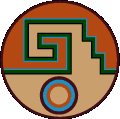Speaker
Description
The search for long lived particles, a common extension to the Standard Model, requires a sophisticated neural network design, one that is able to accurately discriminate between signal and background. At the LHC's ALTAS experiment, beam induced background (BIB) and QCD jets are the two significant sources of background. For this purpose, a recurrent neural network (RNN) with an adversary was used to distinguish long lived particles from BIB and QCD as well as control systematic errors. We are presenting the modernization of this neural network through the use of software tools and techniques including testing, continuous integration, and current software design techniques. This modernization has improved the sustainability, functionality, versatility, and performance of the network which will be used in future analyses.
Significance
This work discusses the improvement of a recurrent neural network used in the LHC ATLAS experiment. We improved the sustainability and performance of the network through the use of modern software techniques such as testing and continuous integration. This network will be used in future analyses which will benefit from its improvement.
| Experiment context, if any | ATLAS, all open source |
|---|
